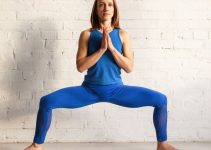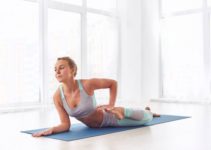- Paripurna Navasana vs. Ardha Navasana
- Precautions & Contraindications
- How to Do
- Variations
- Ardha Navasana Benefits
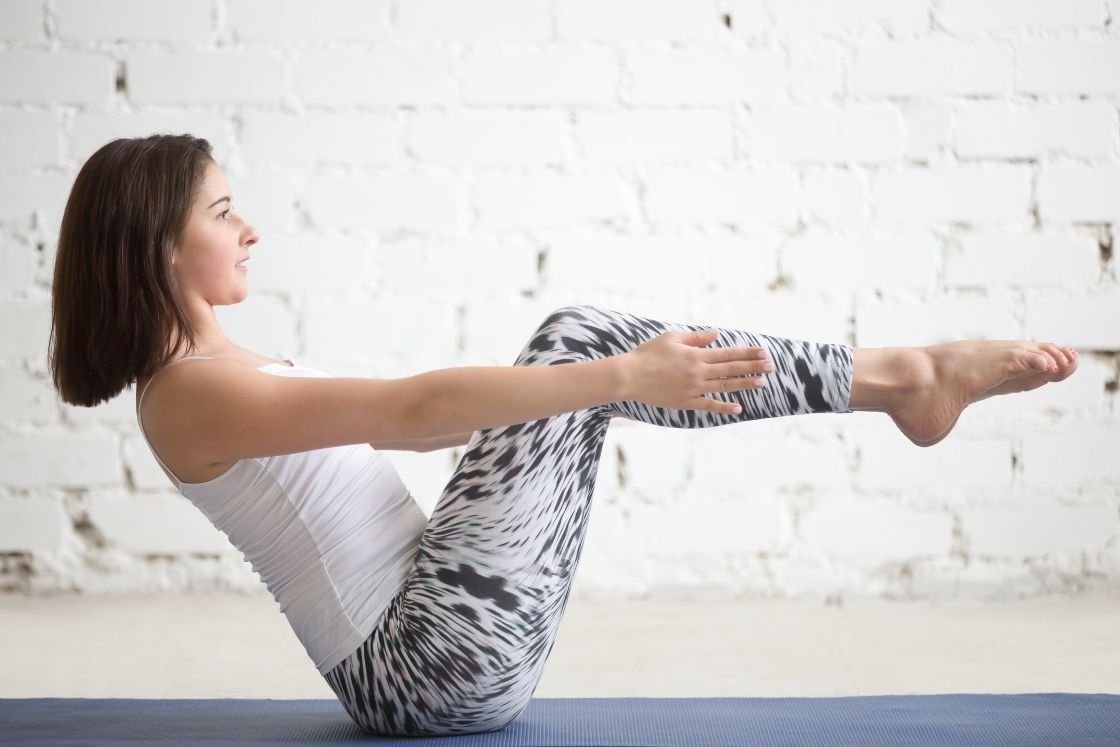
Ardha navasana or half boat pose is a seated balancing posture that involves forward bend. Keeping the level of difficulty and amount of required strength in mind the pose lies in the intermediate level.
Ardha asana is performed in the supine position. It targets working the abdominal muscles, adductor muscles, and hip flexors. Besides these, it also involves the quadriceps, hamstrings, and spine.
Along with providing flexibility and strength to the body, it also strengthens and improves the mental health of the practitioner.
Ardha Navasana vs. Paripurna Navasana
In Sanskrit, ‘Ardha‘ refers to ‘half’, ‘Nava‘ means boat, and ‘asana‘ is ‘pose.’ This posture is named so as the body resembles a shape it seems like a half boat.
Paripurna Navasana or simply Navasana (boat pose) is an accomplished version of half boat pose which needs strong cores and thighs to hold the pose.
Physically the difference between two can be clearly noticed by the position of the body;
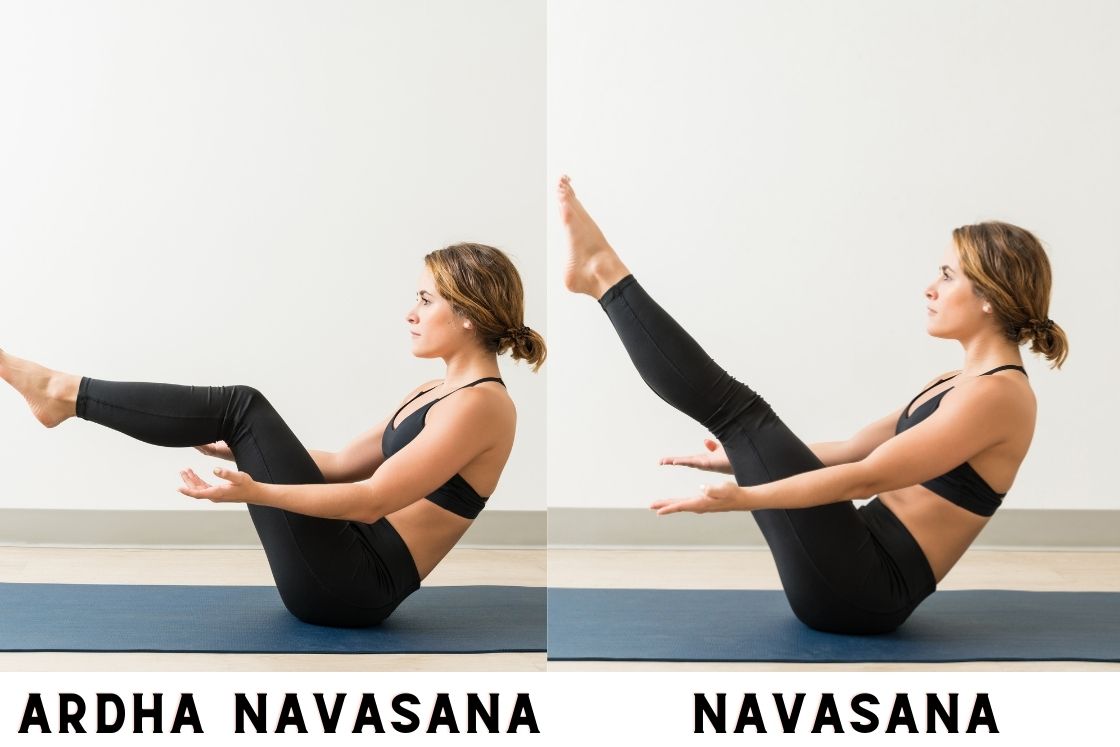
- In half boat pose, because of less strength in core muscles legs are raised off the ground comparably at a lower angle (30-35 degrees)
- In paripurna navasana, however, the legs are raised higher than the level of the head (60-65 degrees) so that there is a very little gap between the thighs and abdomen.
While holding the pose, the sit bones and tail bones are the only body parts touching the floor. The entire body is balanced between them with a straight spine. The arms and the lower leg are extended forward and are parallel to the ground. However, the knees are kept bent.
Ardha Navasana Practice Guide
There are two different ways this pose is done. One is popularised by famous yoga guru B.K.S Iyengar and another is easy version practiced by beginner yogis.
Go through the following points below before you begin the pose practice;
Precautions & Contraindications
- Avoid practicing ardha navasana in case of pregnancy or menstruation.
- Patients of asthma and diarrhea should not practice it.
- Do not practice ardha navasana in case of a neck, back, hip, knee, or ankle injury.
- In the case of Insomnia or when the heavy head, refrain doing half boat pose.
- Always practice ardha navasana with a straight back and avoid any slouching.
- Do it under proper guidance to prevent misalignment and internal injury.
Preparatory pose
How to Do Ardha Navasana (Steps)
- Sit on your mat with your straightened legs stretched in front, i.e. dandasana.
- Bend your knees keeping the feet on the mat and hands on your side.
- Roll your shoulders back and lean slightly on your back.
- Bring your hands behind your knees.
- Inhale and start lifting feet off the floor and extend your lower legs so that they become parallel to the floor.
- Try to find balance on your sitting bones.
- Release your hands and extend your arms with the fingers pointing forward. Keep them parallel to the floor, in line with the lower legs.
- Stay in the pose for 30-60 seconds. Keep breathing normally.
- Exhale and grab your knees and bring your feet back to the floor.
- Inhale draw your upper body to the center keeping the spine straight.
- With an exhalation straighten your legs and bring your hands to the floor.
Iyengar’s description of Ardha navasana is quite different from the above steps. According to Iyengar procedure;
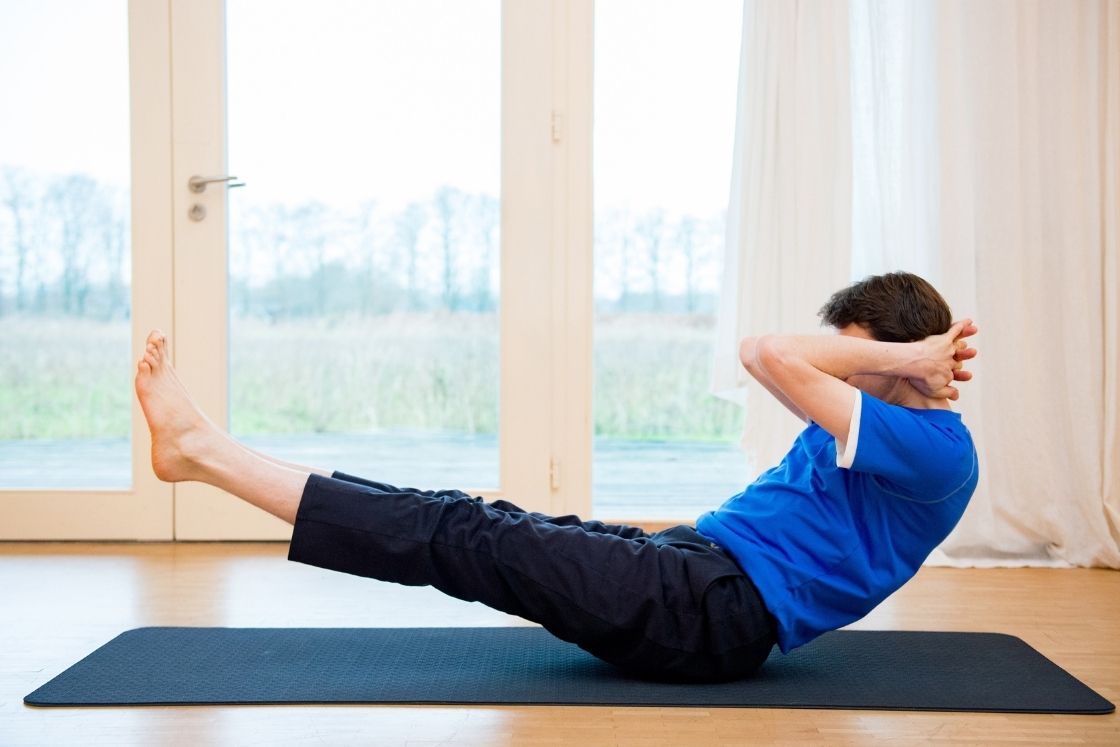
- In step 4, instead of bringing hands to knees level, hands with interlaced fingers are placed at the back of head and then lean back.
- Then legs are stretched straight forward and keep them stiff at an angle of 30 to 35 degrees.
Other steps of coming out of the pose is performed in the same manner.
Beginner’s tips
- Focus on keeping the back straight rather than lifting the feet off the floor. As a beginner, one can perform it by keeping the feet and hands to the floor to add balance to the pose while keeping the back straight.
- Keep the abdomen firm but do not let the belly get puffed or thick.
Follow up poses
- Bound Angle Pose (Baddha Konasana)
- Plough pose (Halasana)
- Supported Headstand (Salamba Sirsasana)
- Chair Pose (Utkatasana)
Modifications and Props
- Using a wall – Perform ardha navasana by placing your feet on the wall while keeping the lower legs parallel to the floor. This helps in maintaining the balance while holding the pose.
- Using a block – Place a block at your lower back. Lean back taking its support. It also helps in supporting your back while holding the pose and ease it a little bit.
- Folded blanket – Use a folded blanket or foamed block and perform the asana sitting on it. This will provide an extra extension to your spinal muscles and prevents slouching on the back by adding a little height.
- Using a chair – Perform ardha navasana sitting on a chair. This helps the spine to get support from the chair’s back, the hands can grab the seat’s edge, and the chest opens well. The chair makes the pose a lot easier by providing the extra height, back support, and handgrip.
Variations
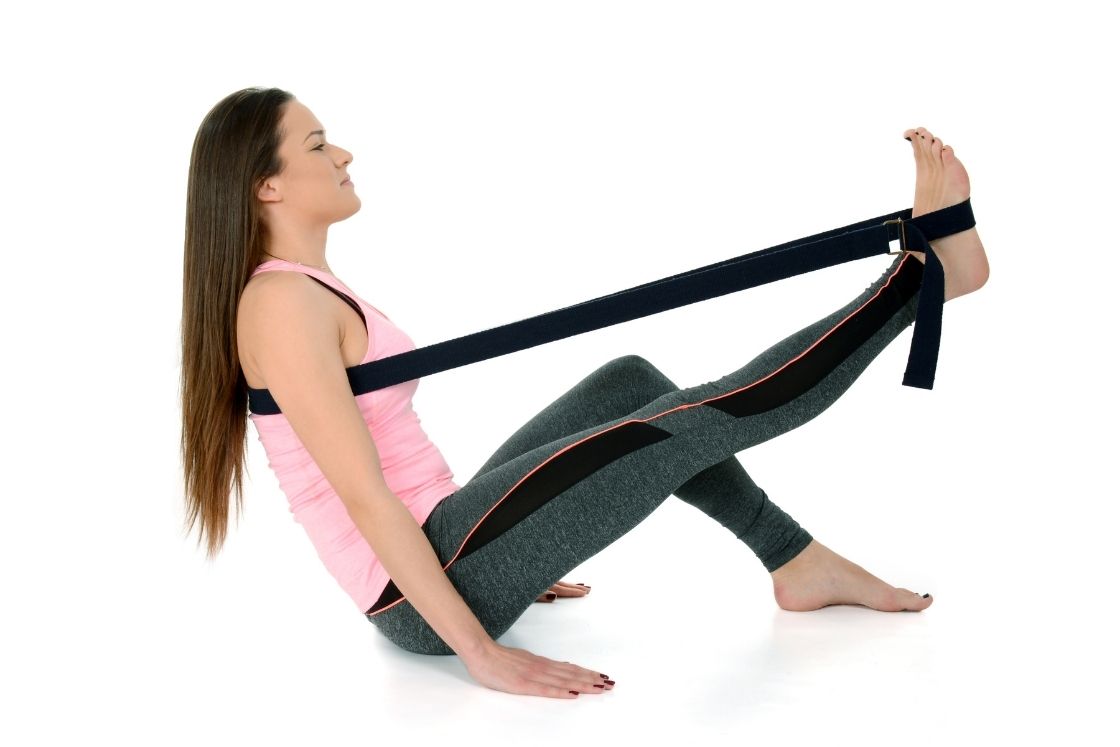
- Paripurna Navasana (Full Boat Pose) – Unlike the half boat pose, the knees are not bent and legs are stretched fully. The head and feet kept aligned. The upper body is making a V with the lower body and the entire body appears like a boat.
- Eka pada Navasana (One-legged boat pose) – As the name suggests, it involves the extension of only one leg. However, the other leg stays on the floor bent in towards the extended thigh. Then it is repeated with switching the legs.
- Half Boat Variation Arms Overhead – Here, after attaining the pose, raise your arms overhead with the fingers pointing towards the ceiling. Extend the arms aligned with the spine.
- You can also practice ardha navasana by keeping the hands behind your back with the palms touching the floor.
Ardha Navasana Benefits
Holding the Ardha Navasana pose demands a straight back and it eventually works to strengthen the back muscles. It also involves the abdominal region that activates the Manipura chakra (Solar plexus). This helps the practitioner to gain confidence and enhance self-esteem.
Following are some health benefits of performing Ardha Navasana;
1. Strengthens the body
Half boat pose works the muscles of the abdomen, hip flexors, and spine. This enhances the endurance of muscles and makes them stronger. The core muscles are also involved along with arms and legs, therefore it strengthens the entire body.
2. Improves balance
While holding the pose, the entire body is balanced on the sitting bones. The lower body and the upper body is lifted, thus the pose is all about finding the balance. With regular practice, body balance improves.
3. Burns belly fat
This pose involves the contraction of abdominal muscles and serves as a workout for them. This makes the practitioner’s body toned and the energy spent on holding the pose helps to burn the extra fat layer of the abdomen.
According to a study, Ardha navasana along with other yogic practices helps in managing weight management and getting rid of obesity.
4. Improves digestion
Ardha navasana involves the abdominal muscles that cause the stimulation of digestive organs. This improves the functioning of the digestive system and prevents related disorders.
5. Enhances blood circulation
It regulates the blood circulation in the lower body. Enhanced blood circulation aids in relieving pain, shivering, and stiffness in the legs. Besides, it makes them stronger.
6. Boosts self-confidence
It activates the Manipura chakra located behind the navel. This chakra is associated with the energy and will power. Hence, ardha navasana helps in increasing self-confidence and self-esteem.
A scientific study has also proved that regular exercising such asana helps in improving self-efficacy in handling any task.
7. Improves detoxification
Ardha navasana activates the kidney and helps in the detoxification process. With enhanced detoxification, helps absorbing essential nutrients. It also aids to filter blood and maintains homeostasis.
8. Stress buster
By removing the toxins from the body, this pose calms the mind and reduces stress, anxiety, and even depression. Therefore, the ardha navasana also serves as a stress buster.
